

Words: Justin Hast
In 2022, Gentleman’s Journal turned 10. To mark the occasion, we made many, many lists, including our most-mentioned carmakers (Jaguar, Range Rover, Ferrari), our most-mixed drinks (martini, negroni, old fashioned) and our most-coveted status symbols (yachts, jets, mansions).
But, perhaps the most hotly contested category was watches. And, yet, after hours of debating and deciding within the team, we distilled the previous decade of horology into a tight selection of 10 models. We look back on our picks…
From Chopard, the Steel Alpine Eagle 36mm
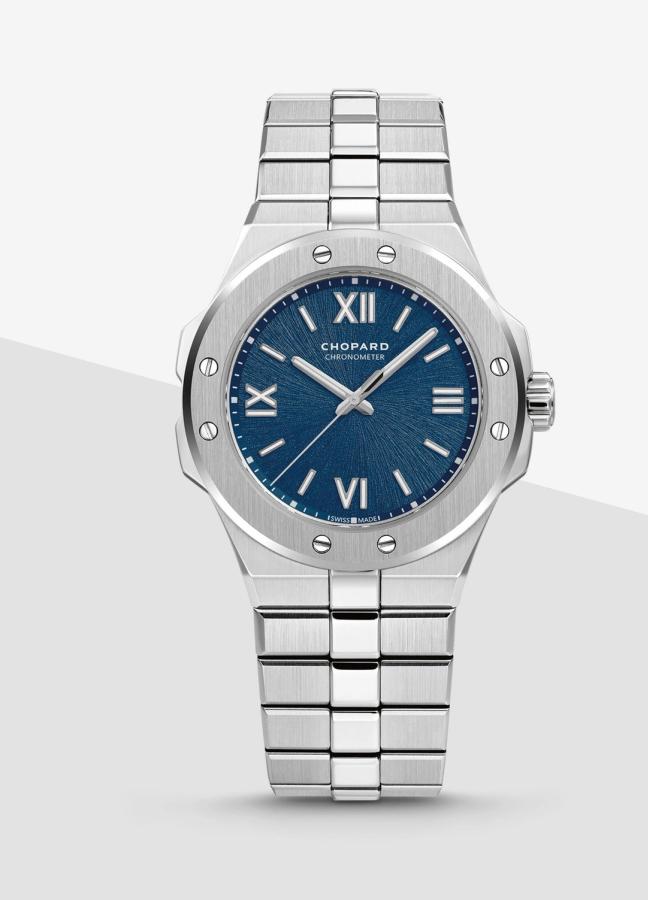
Chopard. One of the great watchmaking houses with sporting elegance at its core. We could easily have gone for the Mille Miglia. But we didn’t. The Alpine Eagle was calling, and we couldn’t help but respond. The one to have? The stainless-steel 36mm non-date, of course (we are purists, after all). The bold roman numerals at 12, 3, 6 and 9 come to life with the wild blue sunburst dial.
A go-anywhere, do-anything steel sports watch, with aesthetics that are often confused with other big names in the category – but, in fact, the Alpine Eagle absolutely stands on its own two feet (or talons) and more.
A go-anywhere, do-anything steel sports watch…
To understand the model – where it comes from, its place in the broader watch market, and its position within the Chopard collection – we have to go back to the St. Moritz, a sports watch created by Chopard’s Karl-Friederich Scheufele, back in 1980, when he was a 22-year-old newcomer to the family business.
Named after the famed Swiss Alpine ski resort and conceived in a variety of executions, the St. Moritz was a successful line for a number of years before eventually being phased out in favour of other collections. The modern incarnation of the St. Moritz, the Alpine Eagle, is exquisitely finished on the case, bracelet and on the movement. The best bit? The design is just in its infancy and is only starting to take flight.
From Tudor, the Black Bay Fifty-Eight
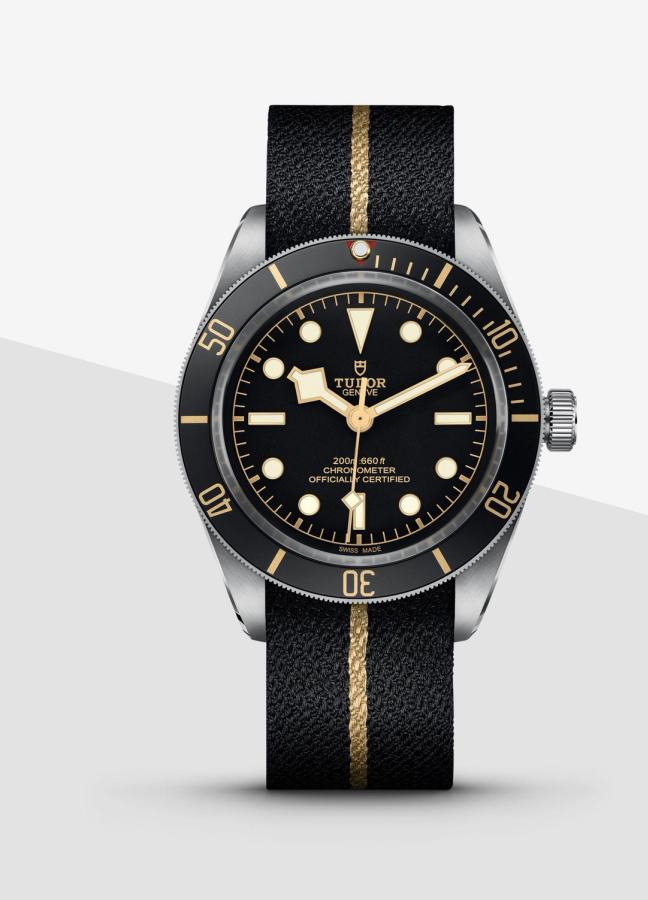
There is one thing (aside from the love of watches) that binds the watch media around the world. Almost every single one of us has a Black Bay. Is there better value for money for under £4,000?
First launched in 2012, the Black Bay line is the modern incarnation of Tudor’s iconic dive watch. To some, it’s the poor man’s Rolex – but, how very wrong they are. Its legacy stretches all the way back to 1954, when Tudor introduced the reference 7922 Oyster Prince Submariner, starting one of the most storied lines of professional watches in 20th-century horology.
Is there better value for money for under £4,000?
The Black Bay Fifty-Eight embodies the best of both modern and vintage Tudor. A smaller 39mm case houses a new manufacture movement, and the gilt dial and bezel make it feel properly worn in from the moment you first put it on your wrist.
It's the closest thing you can buy today to a vintage Tudor dive watch. In size, in styling, and in how it wears on the wrist, it’s almost like having a classic watch that you can safely take on a trip to the beach. And, what’s not to love about that?
From Rolex, the 41mm Submariner
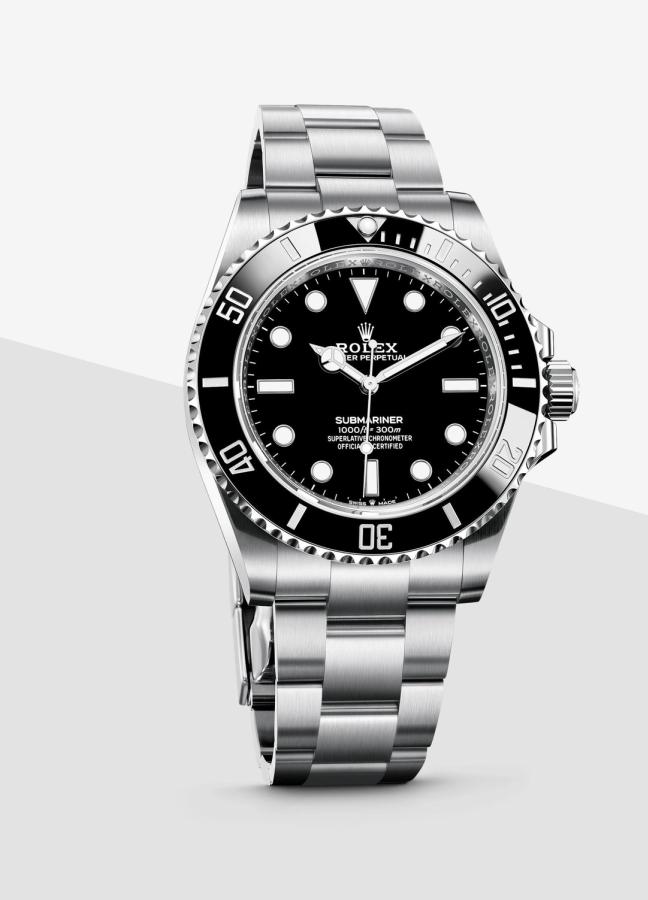
Oh, boy. Rolex. And, we had to choose THE icon (singular). An impossible task! Could we have gone Daytona? Possibly. Could we have picked the Day-Date? Absolutely! Depending on your taste and age, your top pick would likely have been different.
But, for us, the Rolex Submariner was top of mind and entirely unavoidable. It is a watch that needs no introduction. It is the quintessential dive watch, with its uni-directional bezel and its 60-minute graduations that allow a diver to accurately and safely monitor diving time and decompression stops. Manufactured by Rolex from a hard, corrosion-resistant ceramic, the Cerachrom bezel insert is virtually scratchproof.
It is a watch that needs no introduction…
A luminescent capsule on the zero marker ensures legibility, no matter how dark the underwater environment. And, the bezel’s knurled edge is designed to offer grip underwater, even with gloves on. Hour markers in simple shapes – triangles, circles, rectangles – and broad hour and minute hands enable instant and reliable reading to prevent any risk of deep-sea confusion.
And, finally, there’s the Oystersteel case and bracelet, specially developed by the brand from an alloy most commonly used in the aerospace industry, where maximum resistance to corrosion is essential. There have been many imitators (it may well be the most-faked watch going) but few come close. In 1953, the watch world was presented with a tool for diving. Now, we have a social signifier and design icon. Beefed up from 40mm to 41mm in recent years, it is still rock solid both in terms of build quality and investment value.
From Grand Seiko, the SBGA211G

Grand Seiko has slowly won hearts and minds of late. A brand that only recently took full ownership of its name on the dial, and one with historically limited distribution outside of Asia, the marque needed a standout design element to cut through. It had two: its mesmerising dials, inspired by nature, and its innovative Spring Drive calibre (a halfway house between quartz and mechanical).
This SBGA211G is all about the dial – a watch for the purist. Its design is directly inspired by the view from the windows of the Shinshu Watch Studio, a mountainous region where the air gets so cold that the falling snow forms into fine, granular flakes. When the snow piles up, it builds into sparkling drifts that constantly move with the wind – shifting peaks that never stay still and never repeat. The artists at the studio wanted to replicate this natural phenomenon as faithfully as they could in the creation of the Snowflake dial, from the disorderly arrangement of the drifts to the translucency and sparkle of the snow itself.
It’s all about the dial – a watch for the purist…
The pattern is stamped into the metal – but, it’s with fine layers of a semi-transparent matte coating where the vision really comes to life. Despite being only a millimetre or so thick and several centimetres across, the resulting impression is one of deep, crystalline snow that spans for miles around. The case and bracelet are made with high-intensity titanium, providing a scratch- and corrosion-resistant finish that’s 30 per cent lighter than stainless steel.
The blue-steel second hand glides over the dial, glowing beautifully in contrast to the pure-white backdrop. And, it’s all powered by Spring Drive, Grand Seiko’s unique calibre, combining the motive force of a mainspring with the high precision of a quartz watch. Featuring a superior power reserve of 72 hours, it is a dream dress watch with innovation, craftsmanship and a beautiful Japanese obsessiveness at its core.
From IWC, the Big Pilot 43mm
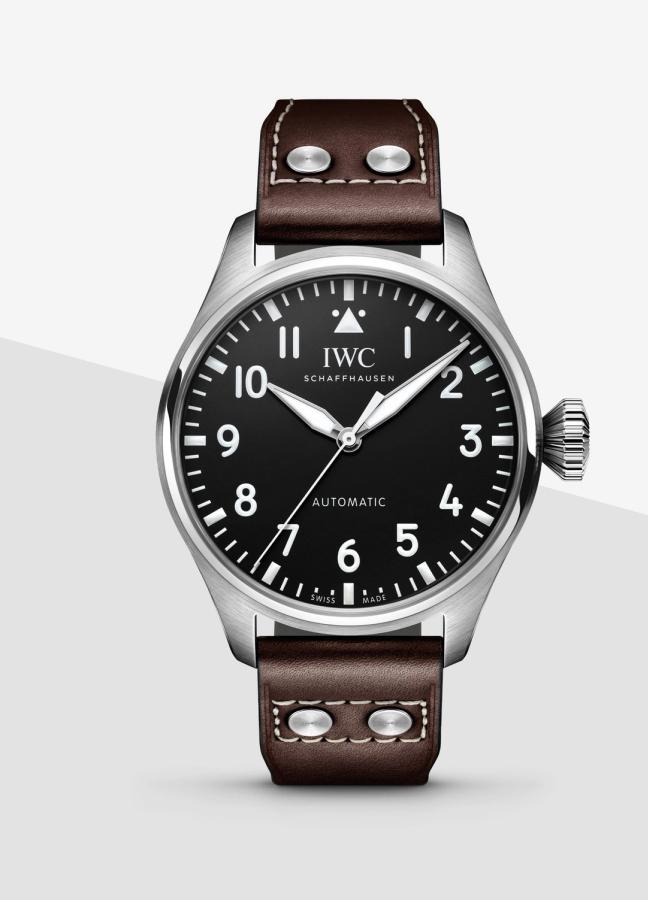
So, IWC. Again, a proper mind-and-heart bender on which way to go. The Portugieser would be an easy win, but the watch that we think has shaped the brand technically and culturally has been the Big Pilot. Inspired by timepieces of 50+mm in size that were worn over flight jackets on both sides of the war, it was in 2002 when we first saw a civilian Big Pilot emerge, in the “slow beat” 5002.
Originally at 46mm in size, it really did live up to its name. Too big for some wrists, but, my god, a statement of design. With its oversized onion crown, its bold Arabic numerals and clean dial, it was a genuine tool for the urban aviator. Reduced in size to 43mm and having undergone a dial touch-up, the classic evolved into a new, sleeker beast.
The classic evolved into a new, sleeker beast…
Still the same bold dial and case, just no power reserve dial or date. The addition to the driving glove in F1 was a master stroke – and one that has allowed the watch to capture the zeitgeist of a motorsport generation. This model is the stainless-steel with blue dial variation (likely the most popular), but the Big Pilot has also been the framework for unique creations (Lewis Hamilton created one for Black Lives Matter), complications (such as the Kurt Klaus-designed single-crown perpetual) as well as several case material executions, from gold to platinum (think Michael Jordan).
IWC is an insider’s brand, known for tool watches that work hard and look superb. If you’re hunting for something that will catch the eye – but also start conversations – you simply can’t go wrong with the Big Pilot.
From Vacheron Constantin, the Traditionnelle Manual Wind 38mm
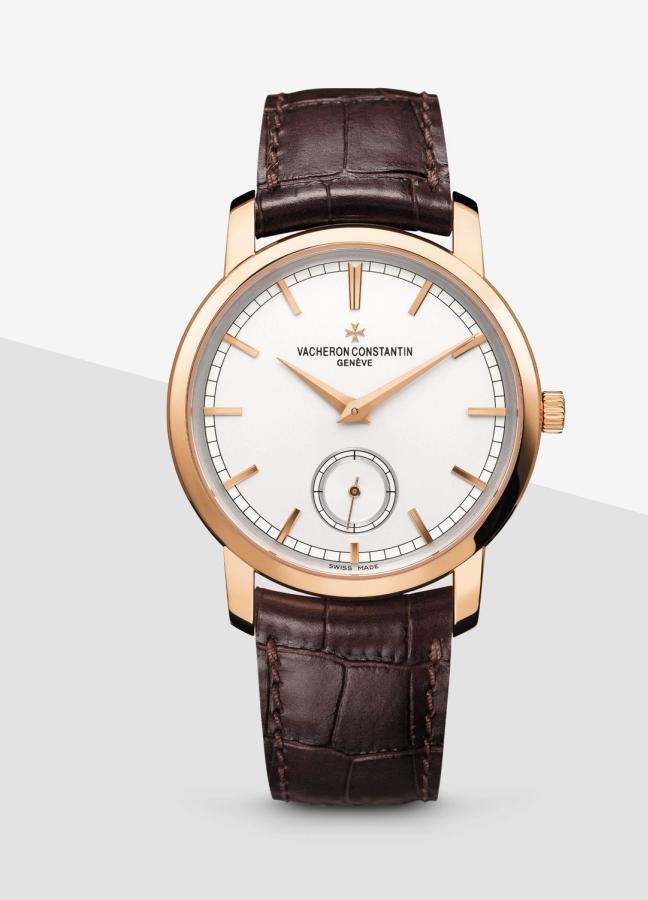
Alongside Cartier, Vacheron Constantin has seen a meteoric rise in the watch world rankings over the last few years. And, for good reason. The sporty, chic Overseas collection – which we so nearly picked for this edit – has been flying. But, it’s the 41mm Patrimony Traditionnelle Self-Winding that we’ve chosen as our icon of the moment.
It’s a little larger than the other members of the Patrimony Traditionnelle line (most of which are sized at 38mm), but the 41mm version feels spot on – something that’s helped by the fact that, at 7.26mm thick, the case sits nice and low to the wrist. This is paramount for a dress watch, since extra height can make getting the watch in and out of your shirt cuff a clumsy act. The Patrimony is reassuringly clean, too, with just hours and minutes displayed by the pink-gold hands on the pared-down dial.
The case sits nice and low to the wrist…
The hands look razor sharp, meanwhile the railroad minutes track is sleek and crisply painted in black on the silver opaline dial, and the 18k pink-gold hour markers are beautifully integrated into the overall design. Inside, it features Vacheron Constantin’s ultra-thin calibre 1120. Vacheron Constantin prides itself on not only adhering stringently to the Geneva Hallmark standards, but also having helped create the new, more strict set of criteria in June, 2012.
An astounding 75 per cent of Vacheron Constantin’s watches carry the Geneva Hallmark, including the watch at hand, something that makes the marque one of the most elegant and competent makers in the watch world, both inside and out. You just cannot go wrong with a Patrimony – now or in 40 years time.
From Audemars Piguet, the 50th Anniversary Royal Oak
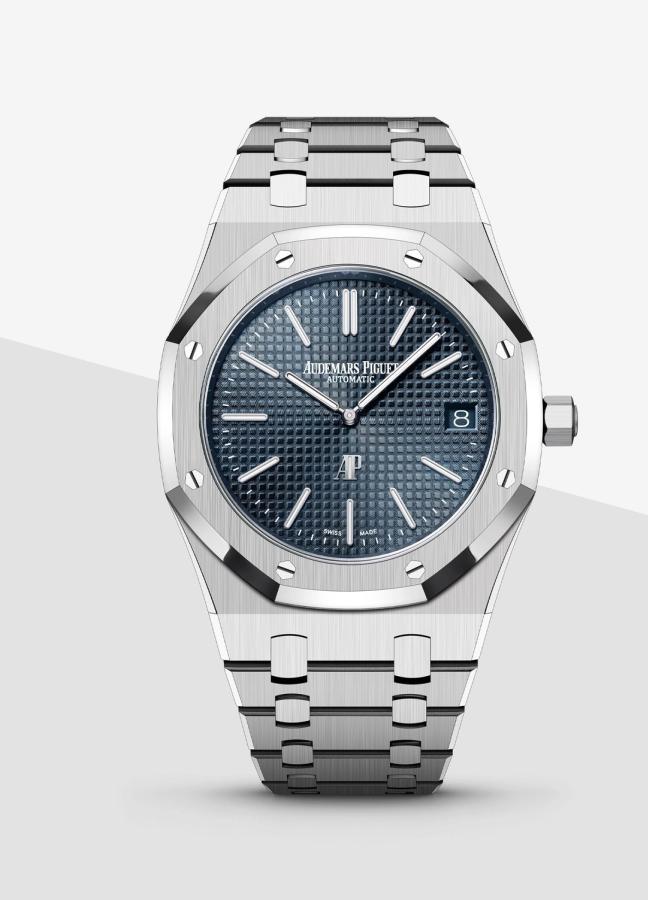
Unlike the predicament we’ve faced with the other makers featured in this list, we knew that when talking about AP, it had to be a Royal Oak. But, which reference? Time only? Complication? Steel? As a purist, it could only be one.
And, the closest to the original 1972 trailblazer – the 39mm steel jumbo – is the 16202. An integrated steel marvel of design and culture, it’s a watch so beautiful that it makes you stop and stare from across the room; a potent mix of sporty, modernist elegance – and all from a maker founded in 1875! Like any classic, its evolution has been treated with care, with a few minor upgrades aesthetically, a very subtly adjusted blue dial, and a new movement inside.
It’s an integrated steel marvel of design and culture…
In short, the 16202 is the 15202 (now discontinued) with a new dial design and a new calibre. Which sounds deceptively simple. But, let’s not forget that upgrading the traditional JLC /AP 2121 calibre is really what allowed the Royal Oak to become the Royal Oak. It was the thinnest self-winding calibre on Earth back then, at just 3.05mm thick, which allowed the Reference 5402 to be just 7.01mm thick.
The reference 15202 that we know and love used effectively the same calibre, but, because of the sapphire caseback, it was 8.1mm thick – still making it one of the finest, thinnest, and most wearable sports watches around. And, now, there’s this – the new 16202 – which is almost impossible to get hold of and already adored across the watch community. If you get the chance, though, snap it up immediately. This may be the only watch you’ll ever wear.
From Patek Philippe, the 6119G Calatrava
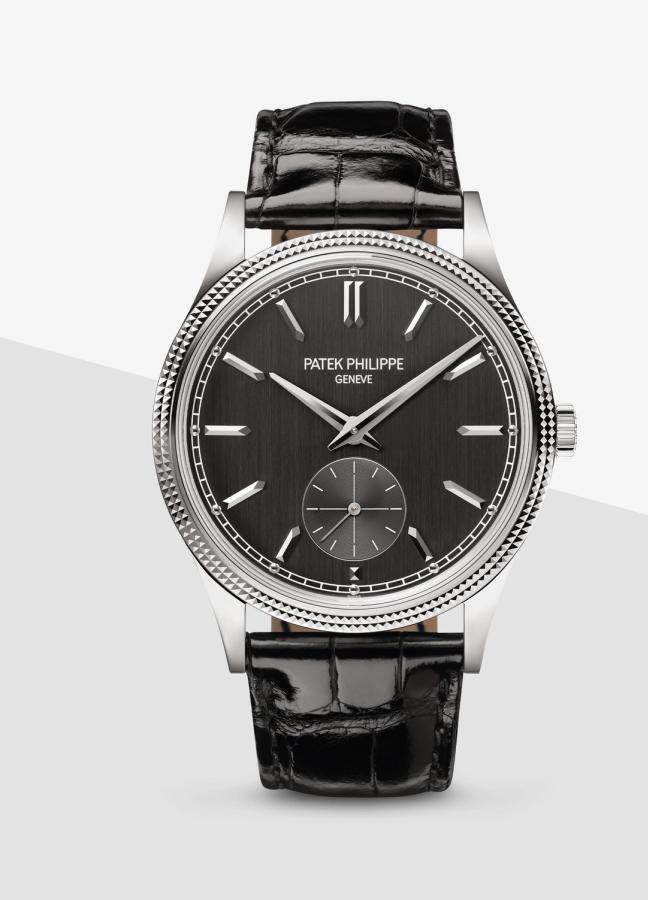
I can hear the comments and uproar already. 'Dude, have you not heard of the Nautilus?' they cry, or, 'we all know the Aquanaut is unbeatable!' All I’ll say is that the watch that made Patek Philippe Patek Philippe is the humble Calatrava. The design was originally introduced in 1932, and the first model was Ref. 96. The watch was originally crafted by Henri Stern soon after his father, a dial manufacturer, acquired Patek Philippe in 1932. Calatrava was introduced to help the company pass through the Great Depression smoothly.
That is why, when Patek announced its new generation of Calatrava, we all took notice. The most distinctive feature on the exterior of the watch is the Clous de Paris (hobnail pattern) on the bezel. The now discontinued Ref. 5119, from 2006, had the same bezel design, and the 6119 is framed as the successor to that reference.
The watch that made Patek Philippe Patek Philippe is the humble Calatrava…
The 5119 itself succeeded the 3919 (circa 1985), which featured black-painted Roman-numeral indices, a small-seconds dial at six o’clock, and straight lugs. The case design of the 6119 is a clear departure from the straight-lugged 5119 and 3919. From that point of view, the design is strongly influenced by the 96D, which dates back to 1934.
In addition to the spec update, this new, larger calibre brought another major change to the Calatrava. The Cal. 30-255 is decisively modern in both construction and aesthetics, having more available torque and a longer power reserve, thanks to the twin-barrel. I understand the display caseback may not be everyone’s cup of tea, but I favour it on this particular execution as it demonstrates its intention confidently. What a watch. Stacked with small design touches and subtle detailing, it is an object of beauty that doesn’t need to shout, but whisper.
From Omega, the Speedmaster '57

The Omega Speedmaster has a special place in the watch lover’s heart. Love it for its design or for its history – but you have to love it. Walk into a room with a Speedy strapped to your wrist and you get instant kudos. The watch’s history goes back to 1957, when it was introduced as a sports and racing chronograph to complement Omega’s position as the official timekeeper of the Olympic Games.
The first Speedmaster model was the reference CK 2915, also known as the 'Broad Arrow', which was designed by Claude Baillod with a triple-register chronograph layout, high-contrast index markers, and a domed Plexiglas crystal. The dial was an example of the perfect balance and proportions we still see today. Space flight and the Speedmaster are inextricably linked, too. When Neil Armstrong and Buzz Aldrin stepped onto the lunar surface in 1969, this Speedmaster model became the first watch ever worn on the moon. In fact, it has since become the watch that has served on the most lunar missions.
Love it for its design or for its history – but you have to love it…
In 2022, Omega announced a complete refresh for the two-register Speedmaster ’57 line, a sub-collection of the Speedmaster family that was first introduced in 2013. A major highlight here is the presence of a brand-new manual-wind chronograph movement, the Omega calibre 9906. It’s (naturally) certified as a Master Chronometer by METAS; features twin mainspring barrels mounted in series for a 60-hour power reserve; is outfitted with a column wheel; and has Omega’s customary Arabesque Côtes de Genève decoration.
The Speedmaster ’57 case has also been redesigned to even more closely resemble the profile of the original CK 2915. That means straight lugs with zero facets, absent crown guards, and a symmetrical caseband, just like the 2915 you’ve always wanted. If you are in the market for a Speedy, this may be the best all-round package we have ever seen.
From Breitling, the Navitimer B01 Chronograph

When I think of Breitling, one reference comes to mind – the Navitimer. A watch that defined a genre and a tool every pilot needed (or, at least, needed to look the part), the Navitimer came about with the skies specifically in mind. Sensing a need for a self-contained wrist instrument for pilots, Breitling and the Aircraft Owners & Pilots Association (the AOPA) jointly developed the Navitimer chronograph in the early 1950s.
It debuted to the public in 1954, and the AOPA immediately adopted the watch as its official timepiece – an endorsement that quickly made the Navitimer a favourite of pilots around the world. The watch has seen countless iterations over the years and is one of the world’s most-recognised luxury sports watches.
A watch that defined a genre…
The updated Breitling Navitimer, for 2022, is known officially as the Navitimer B01 Chronograph and comes in three case sizes with a variety of different dial options, many of which have never been offered in a Navitimer before. On the dial, we see a return to the AOPA Breitling 'wings' logo, which has been used on some retro-remake models, but no standard collection pieces, until now.
My personal preference is the 43mm version, but I would gladly wear any of them. Yes, this is an icon. But, for the watch geek, it is all about the movement – which, for the first time in a Navitimer Chronograph, you can see through an exhibition caseback. (It’s a COSC-certified Chronometer and operates at 4Hz with 70 hours of power reserve.) It all means you don’t need to be a pilot to appreciate the Navitimer – a transcendent tool watch that has become a true cultural statement, and one you can rely on.
Want more watches? These are our favourite timepieces of 2023...


